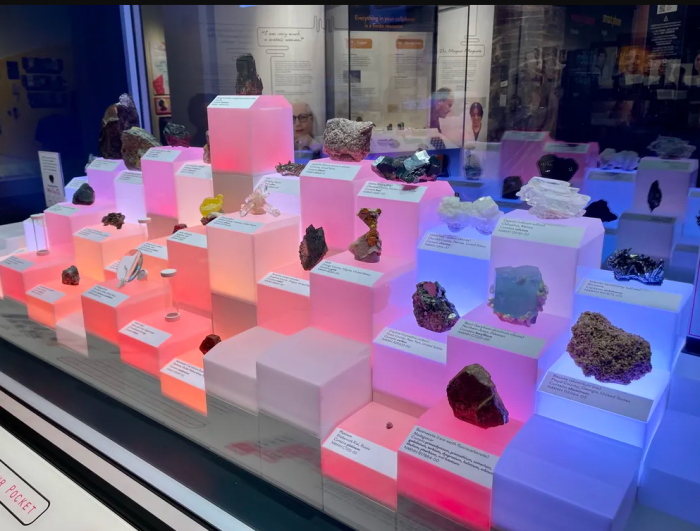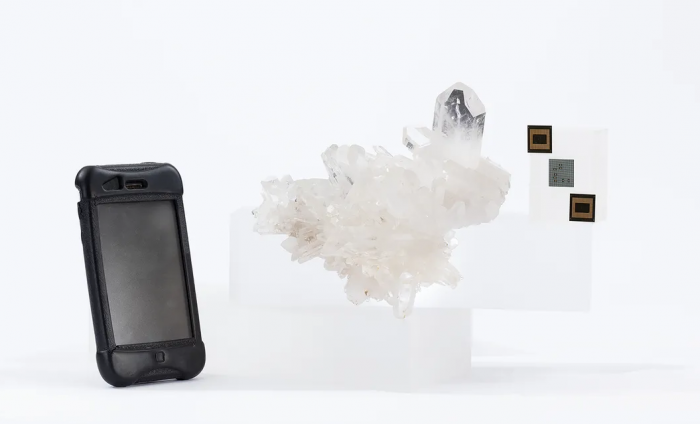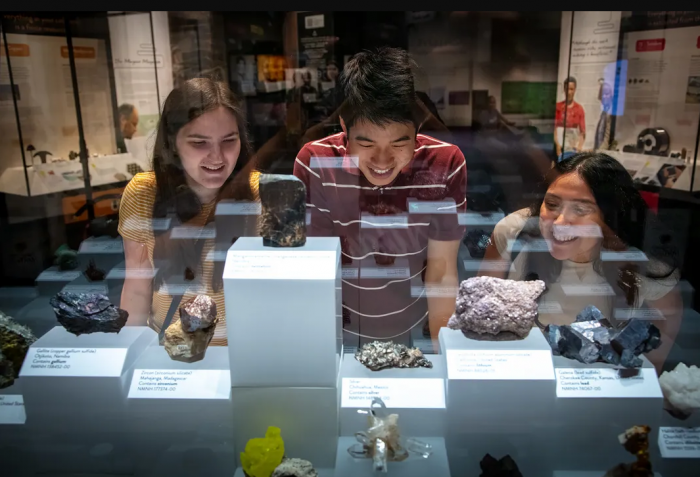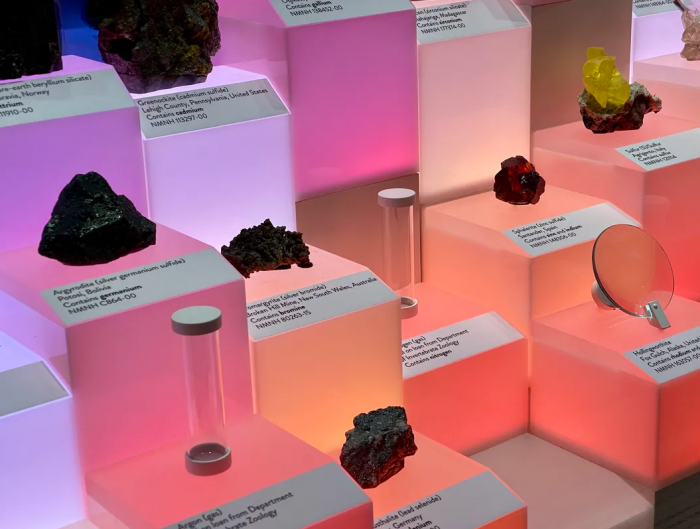New Museum Display Showcases the Mineral Building Blocks of Cellphones
The story behind the specimens at the center of the Natural History Museum’s new exhibition “Cellphone: Unseen Connections”

The National Museum of Natural History’s newest exhibition “Cellphone: Unseen Connections” is brimming with dazzling displays including supersized emoji screens, a tower of vintage cellphones and a comic mural spawning multiple walls.
But one of the exhibition’s most eye-catching set pieces is a ten foot tall cellphone-shaped case containing a multitude of minerals from around the world. Inside the case are precious staples like gold and platinum alongside lesser known varieties with tongue-twisting names like manganotantalite and hollingworthite.
Displaying a mineral collection in the middle of an exhibition devoted to cellphones may initially seem odd. However, just about anything that cellphones do—including making calls, charging, and even lighting up—would not be possible without these minerals.

Collectively, the mineral specimens in the display contain the 65 different elements that power the average cellphone. (By comparison, the entire human body is composed of only 24 different elements.) Thanks to raw materials mined everywhere from Arkansas and Alaska to Mozambique and Madagascar, cellphones contain more than half of the elements in the entire periodic table.
“Cellphones have pretty much taken over our lives but most people have absolutely no clue how they’re made,” said Mike Wise, a research geologist at the museum. “Most of us don’t think what would happen if the raw materials necessary to make cellphones go away.”

Wise specializes in studying pegmatites, a type of igneous rock loaded with quartz and other crystals. Granite-like pegmatites had been mined for decades for the ceramic industry when Wise started studying pegmatite deposits in Canada’s Northwest Territories in the mid-1980s. He was primarily working with deposits of columbite-tantalite, or coltan, a dull black ore containing the chemical element tantalum. Other rocks Wise studied contained high concentrations of the element lithium.
Because the widespread adoption of cellphones was still years away, no one knew just how important tantalum and lithium were at the time. Today, tantalum is a key component of cellphone capacitors, where it stores electrical charge and regulates voltage. Tantalum also helps improve audio quality. Alternatively, lithium is essential to lightweight, easy to charge smartphone batteries. “By coincidence, the rocks that I study contain probably the two most important elements — tantalum and lithium — for making a cellphone work,” Wise said.

While tantalum and lithium keep cellphones charged, they are just a fraction of the elements crammed inside a cellphone. To illustrate the cellular device’s complex elemental makeup, Wise joined the “Cellphone” exhibition curatorial team and began sifting through the museum’s mineral and rock collections to find specimens containing an array of elements from aluminum to zinc.
But Wise was careful not to be swayed by the museum’s cache of dazzling minerals. “As much as I would have loved to put the really nice pretty specimens out there, those are not the sort of things that most mining companies would pull out of the ground,” Wise said.
I wanted to pick something that was representative of what mining company pull out of the ground and crush up to extract particular elements that go into cellphones.
Mike Wise, NMNH Research Geologist
He decided to take a more muted approach. For example, instead of selecting one of the museum’s lavender kunzites, a gemstone that contains lithium, Wise opted for a dull hunk of spodumene, a commercially important source of lithium. “So in one sense the mineral specimens in the exhibit are a pretty bland looking lot of black and brown minerals,” Wise said. “But that’s the stuff that they actually mine.” However, even some of the exhibition’s drabber minerals still glimmer thanks to the soft glow of red, pink and blue lights that radiate off the multi-tiered display.

Wise hopes the central display will give museum visitors an appreciation for just how much people rely on the Earth for cellphones and other essential devices that they cannot live without. “There’s a saying that, if you can’t grow it, you have to mine it,” Wise said. “Most of the materials in our lives were made by stuff that came out of the ground. I’m hoping that visitors gain an appreciation of how important minerals are to everything we use, including cellphones.”

Jack Tamisiea is a Science Communications Specialist at the Smithsonian’s National Museum of Natural History. In addition to covering all things natural history for the museum’s blog, Smithsonian Voices, he tracks media coverage and coordinates filming activities for the museum’s Office of Communications and Public Affairs. Jack recently completed his masters in science writing at Johns Hopkins University and his writing has appeared in the New York Times, Scientific American, National Geographic and other science-focused publications. In his free time, he loves exploring the outdoors with a sketchbook and camera. You can read more of Jack’s work at https://jacktamisiea.com.
This post was originally published by the Smithsonian magazine blog, Smithsonian Voices. Copyright 2023 Smithsonian Institution. Reprinted with permission from Smithsonian Enterprises. All rights reserved. Reproduction in any medium is strictly prohibited without permission from Smithsonian Institution.
Posted: 3 July 2023
-
Categories:
Feature Stories , Natural History Museum , Science and Nature







